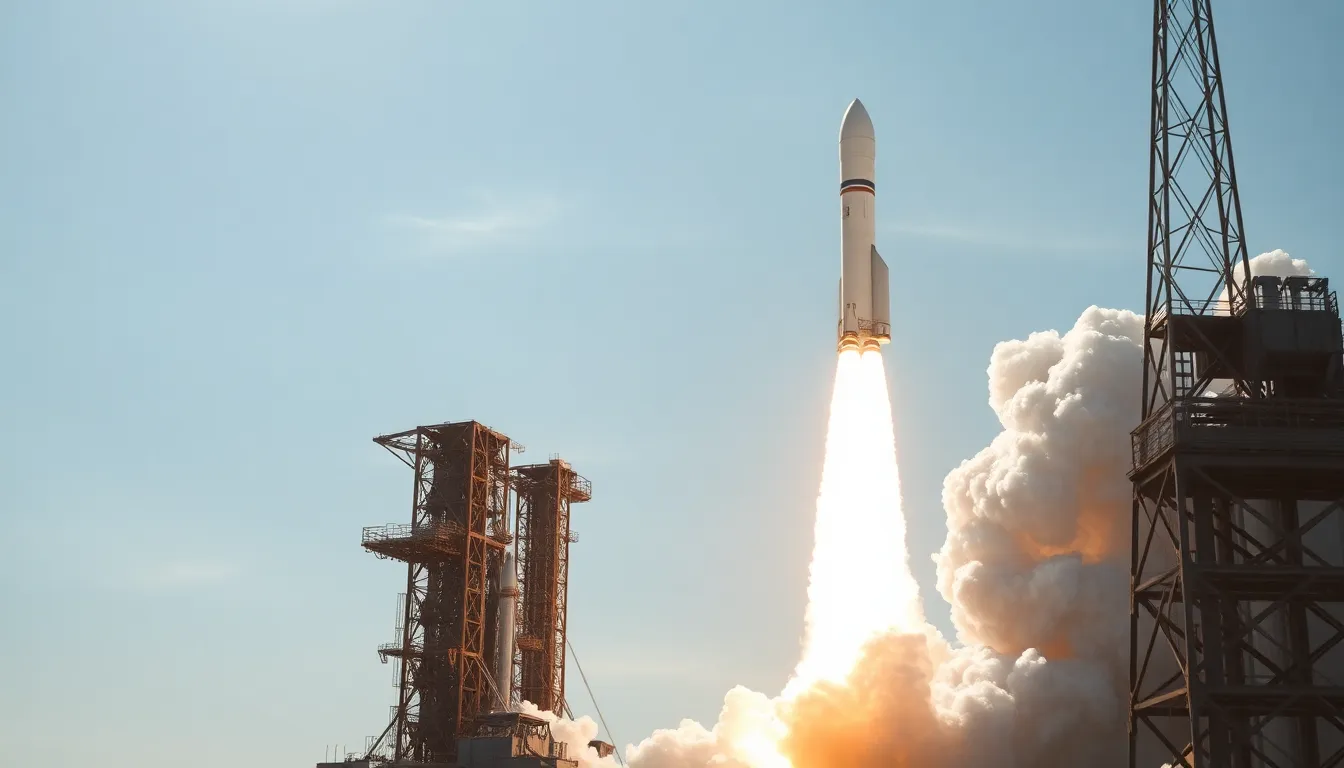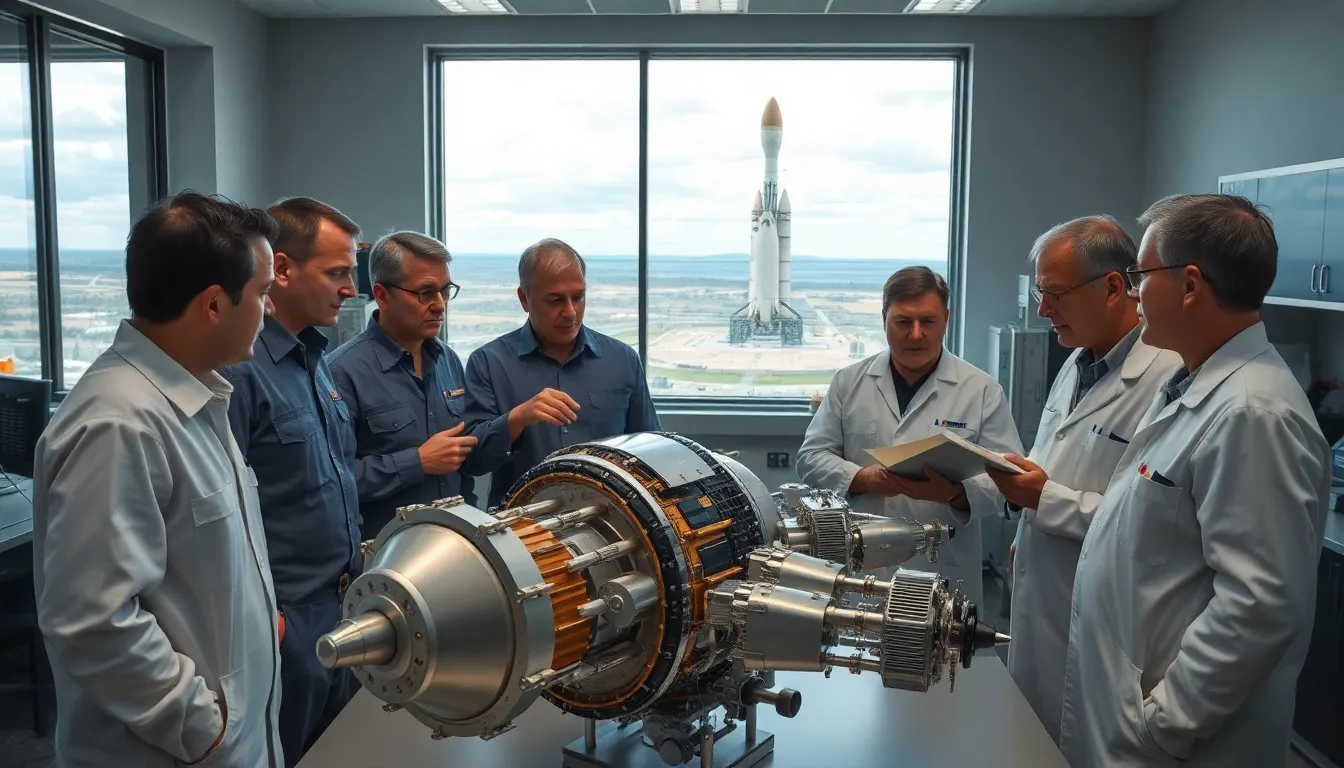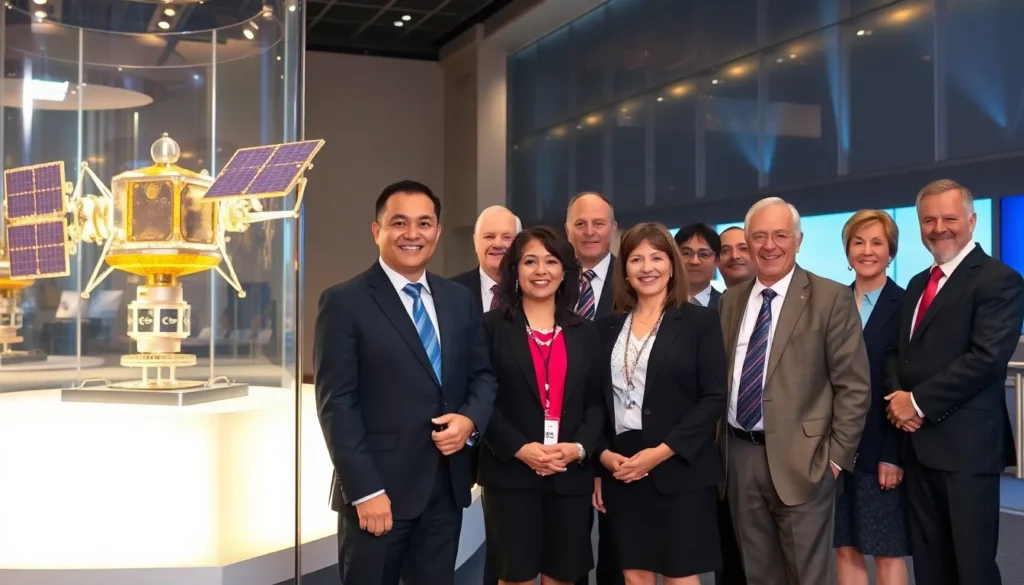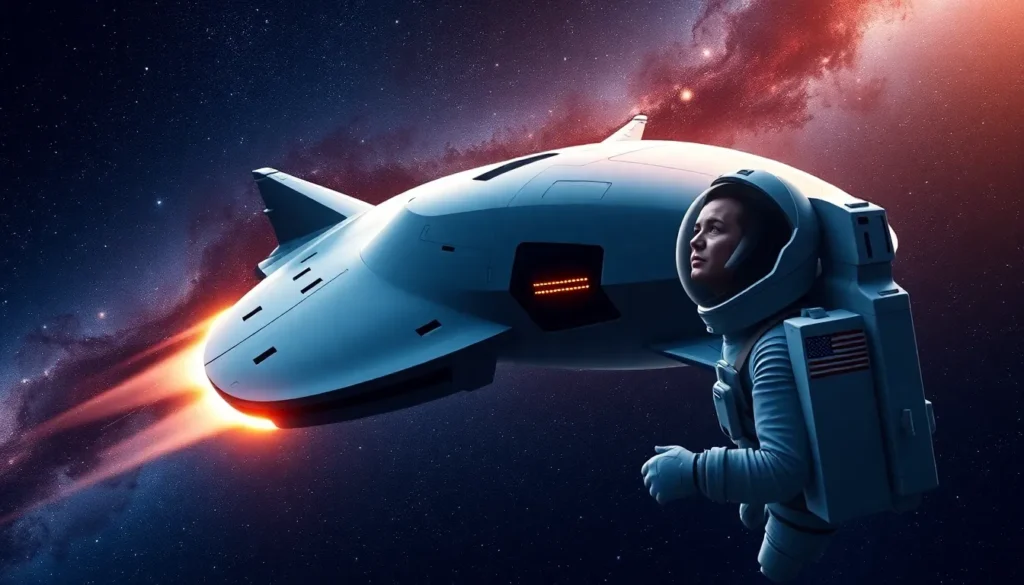Space vehicle systems are the unsung heroes of the cosmos, tirelessly working behind the scenes to ensure that humanity can explore the final frontier. Imagine a world where rockets launch without a hitch, satellites beam down cat videos, and astronauts float around like they’re in a zero-gravity dance-off. These systems make it all possible, blending cutting-edge technology with a sprinkle of engineering magic.
Table of Contents
ToggleOverview of Space Vehicle Systems
Space vehicle systems comprise various components designed for specific functions within a spacecraft. These systems include propulsion, navigation, communication, and life support, each playing a vital role in operational success. Propulsion systems enable vehicles to escape Earth’s atmosphere and maneuver in space. They utilize chemical or electric propulsion technologies, ensuring efficient thrust and trajectory control.
Navigation systems utilize onboard sensors and algorithms to determine the spacecraft’s position and path. Accurate navigation is crucial for missions, particularly for landing on celestial bodies or maintaining orbit. Communication systems facilitate data transfer between the spacecraft and mission control. They employ radio frequencies to transmit telemetry data, voice communications, and scientific information.
Life support systems maintain a habitable environment for astronauts during space missions. These systems regulate air quality, temperature, and pressure, ensuring crew safety and comfort. Additionally, power systems supply energy necessary for all onboard equipment. Solar panels often provide this energy, harnessing sunlight in space.
Thermal control systems safeguard spacecraft from extreme temperature variations encountered in space. They utilize insulation and radiators to manage heat, protecting sensitive equipment. Structures also play an essential role in ensuring the integrity and durability of the spacecraft. They must endure intense forces during launch and provide a stable platform for payloads.
Finally, integration of these various systems determines the success of space missions. Engineers meticulously test and refine each component to ensure seamless operation. It is this combination of advanced technology and innovative engineering that propels space exploration forward.
Types of Space Vehicle Systems

Space vehicle systems encompass various components critical to mission success. Each category plays a specific role in ensuring functionality throughout different mission phases.
Launch Systems
Launch systems are responsible for propelling vehicles from the Earth’s surface. They typically rely on powerful rocket engines that utilize either solid or liquid propellants. Every launch system requires robust infrastructure, including launch pads and ground support equipment. Guidance and control systems direct the vehicle during ascent to ensure it reaches the intended trajectory. Safety mechanisms must activate in emergencies to protect both the vehicle and personnel.
Orbital Systems
Orbital systems operate once the spacecraft achieves space. Navigation systems rely on onboard sensors and ground-based tracking to ensure correct positioning and trajectory maintenance. Power systems play a pivotal role, providing energy through solar panels and batteries. Communication systems facilitate real-time data transmission between the spacecraft and mission control. Thermal control systems maintain stable temperatures, protecting sensitive instruments from extreme conditions.
Re-entry Systems
Re-entry systems ensure the vehicle safely returns to Earth from space. Heat shields protect against intense atmospheric friction. Parachutes or retrorockets manage descent and landing, requiring precise deployment mechanisms to ensure a safe touchdown. Navigation aids guide the vehicle during re-entry to achieve the desired landing area. Safety protocols monitor structural integrity throughout the process, minimizing risks associated with atmospheric re-entry.
Key Components of Space Vehicle Systems
Space vehicle systems consist of various integral components that ensure the success of missions beyond Earth. Each system performs a specific role that contributes to overall functionality.
Propulsion Systems
Propulsion systems play a vital role in launching vehicles into space. These systems utilize either chemical or electric technologies to generate thrust. Chemical propulsion provides high power output for initial launches, while electric propulsion operates efficiently in the vacuum of space. Rockets are often employed for ascent, relying on staged systems for maximum efficiency. The choice of propulsion directly affects mission duration and payload capacity.
Navigation and Guidance Systems
Accurate navigation and guidance are crucial for space missions. These systems determine the vehicle’s position throughout its journey, ensuring precise maneuvers for landing or orbital maintenance. Inertial navigation combines gyroscopes and accelerometers for real-time data processing. Satellite-based systems enhance accuracy during complex maneuvers. Ground control teams monitor the spacecraft’s trajectory continuously, making necessary adjustments for successful mission outcomes.
Communication Systems
Communication systems facilitate vital data exchange between the spacecraft and mission control. These systems operate on various radio frequencies to transmit telemetry, voice, and video information. Antennas positioned on the spacecraft ensure reliable connectivity with ground stations. High-gain antennas provide enhanced signal strength for long-distance communication. Redundant systems exist to maintain communication during critical phases of the mission, underscoring reliability and safety in operations.
Challenges in Space Vehicle Systems
Space vehicle systems encounter multiple challenges that can hinder mission success. Addressing these issues is essential for advancing space exploration.
Technological Barriers
Technological barriers affect the efficiency and reliability of space vehicle systems. Limited advancements in propulsion technology can restrict mission capabilities, such as speed and fuel efficiency. Navigation inaccuracies may lead to position errors during crucial stages of a mission. In addition, communication systems face obstacles like signal degradation over long distances or environmental interference. Overcoming these barriers requires continuous research and development to enhance existing technologies and innovate new solutions.
Cost Considerations
Cost considerations play a significant role in the development of space vehicle systems. High expenses arise from research, manufacturing, and operational processes, often leading to constraints on project budgets. For instance, the launch costs can vary dramatically depending on vehicle specifications and payload requirements. Balancing cost with advanced technology presents challenges, as new innovations tend to increase expense. Organizations may prioritize affordability without sacrificing system effectiveness, necessitating strategic budgeting and funding.
Safety Regulations
Safety regulations impose critical standards on space vehicle systems to protect astronauts and equipment. Compliance with government and industry guidelines ensures designs meet rigorous testing and operational safety standards. Stringent protocols govern life support systems, emergency procedures, and structural integrity assessments. Adhering to these regulations can prolong development timelines and inflate costs. Nevertheless, prioritizing safety remains vital, as any lapse could result in mission failure and loss of human life.
Future Trends in Space Vehicle Systems
Innovations in propulsion technology are shaping the future of space vehicle systems. Electric propulsion systems, known for their efficiency, are becoming more prevalent in deep-space missions. Solar sails and plasma thrusters are gaining attention due to their potential for long-duration flights.
Navigation systems are also evolving. Advanced autonomous navigation based on artificial intelligence enhances spacecraft accuracy, ensuring precise trajectory adjustments. Improved satellite networks will facilitate better communication and data transfer between spacecraft and mission control.
Life support systems are witnessing revolutionary advancements. Closed-loop systems that recycle air and water create sustainable environments for astronauts over extended missions. The incorporation of bioregenerative life support systems holds promise for long-term habitation on other planets.
Power systems are becoming more efficient with the use of advanced solar panel technology. Research focuses on increasing energy capture and storage, allowing vehicles to stay powered longer without resupply.
Thermal control systems are adapting to more extreme conditions. Experiments with phase change materials provide better temperature regulation for spacecraft approaching celestial bodies with intense heat.
Cost reduction remains a priority in space vehicle development. Innovators explore additive manufacturing to decrease manufacturing costs and time. Collaboration among private and public sectors aims to optimize funding and resource allocation for space exploration.
Safety protocols are undergoing enhancements to meet the demands of more complex missions. Rigorous testing of new technologies and systems is essential to ensure crewed missions remain safe.
The focus on integration among all space vehicle systems encourages seamless communication across technologies, bolstering mission success. As trends continue to emerge, the landscape of space exploration is set for remarkable transformations.
Space vehicle systems are indispensable for the future of exploration beyond Earth. Their intricate design and integration ensure that missions can be executed with precision and safety. As technology advances the capabilities of propulsion, navigation, and life support systems, the potential for deeper space exploration expands dramatically.
Innovations like electric propulsion and autonomous navigation promise to redefine how missions are planned and executed. The focus on sustainability and cost efficiency will play a crucial role in making space exploration more accessible.
With ongoing research and development, the challenges faced by these systems will continue to be addressed, paving the way for groundbreaking discoveries. The journey into space is just beginning, and the evolution of space vehicle systems will be at the forefront of humanity’s quest to explore the cosmos.




